Spring, that time of rebirth for the temperate regions of the world, is thankfully showing itself off again. With new growth on trees, flowers showing off and the lingering sweet smells of airborne pollen, these are but a few signs of the season.
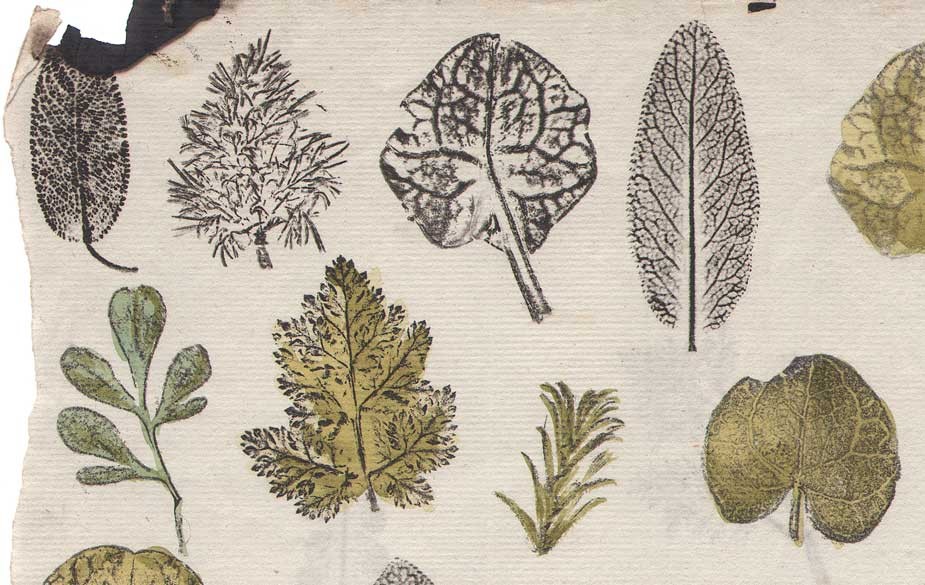
Detail: Nature prints: English: unknown maker: (recto) leaf specimens with selective hand-coloring: ca. 1775-1825: 30.5 x 38.3 cm: laid paper leaf (separated) with Britannia shield and C&S watermarks. from: PhotoSeed Archive
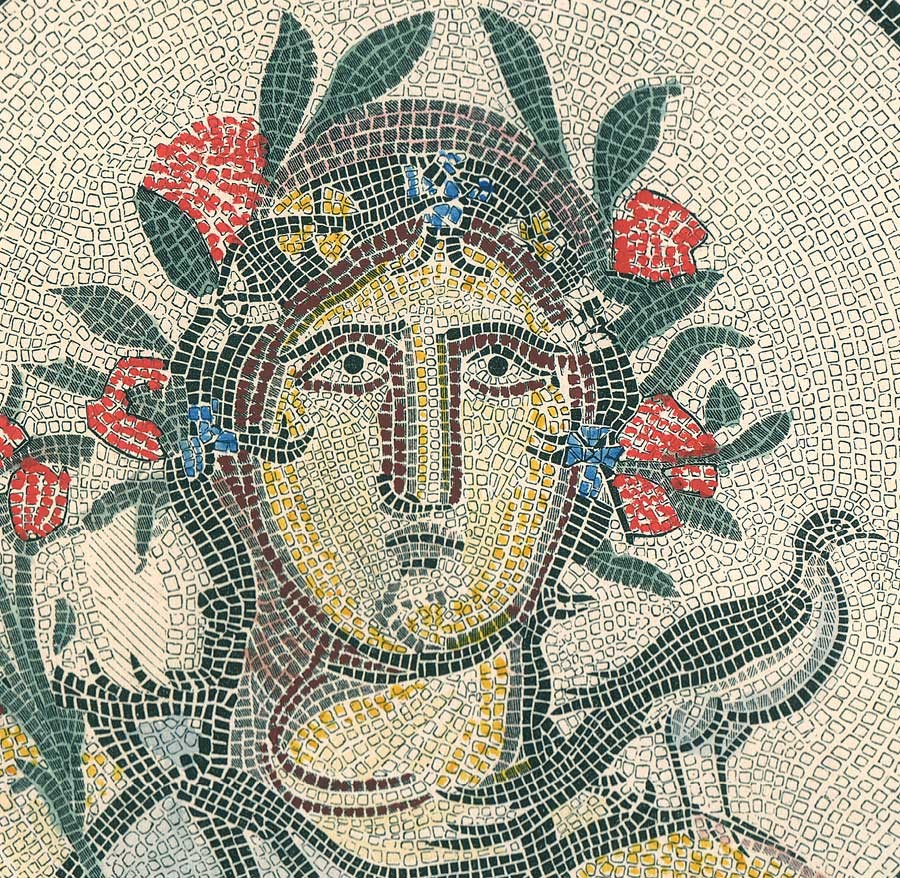
Detail: “Flora”, the Roman goddess of Spring and flowers: 1850: hand-colored lithograph from Talbotype by Philip Henry Delamotte (1821-1889) of hand-drawn and colored tracing of Roman mosaic (mid 2nd Century A.D.) at Cirencester, England. 14.5 x 10.2 cm: reproduced as plate V in: “Illustrations of the Remains of Roman Art, in Cirencester, The Site of Antient Corinium”: London. This floor mosaic of Flora was one of three seasonal mosaics excavated at Cirencester in 1849. From: PhotoSeed Archive
As children, our very first “photographs” joyously executed in winter climes would have taken the form of angelic impressions left in the newly fallen snow, or tropical: designs left on sandy seashores.

Detail: Nature prints: English: unknown maker: mirror impression of unknown grass and leaf cluster specimens: ca. 1775-1825: 30.5 x 38.3 cm: laid paper leaf (separated) with Britannia shield and C&S watermarks. from: PhotoSeed Archive
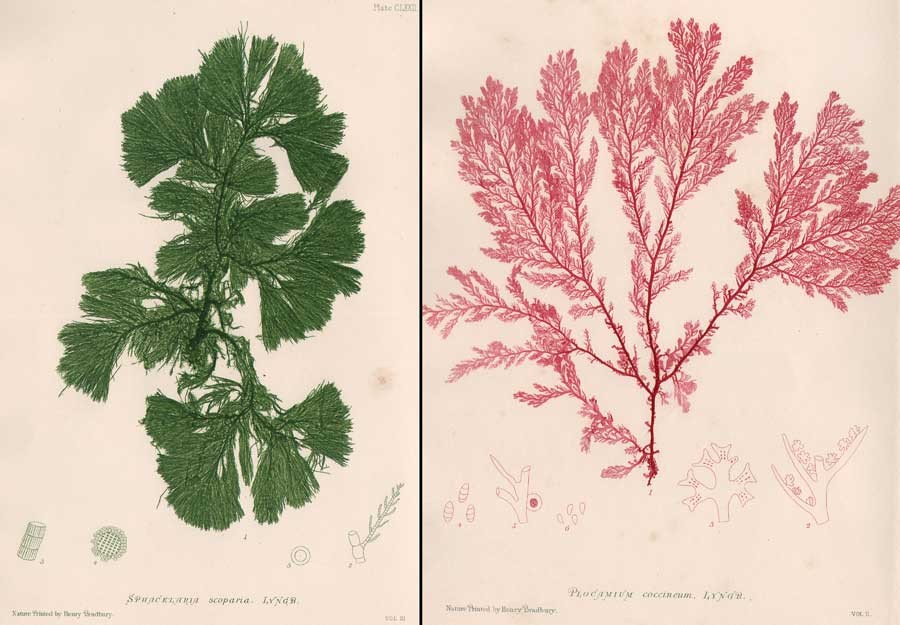
Examples of nature-printed British Seaweeds printed in intaglio by Henry Bradbury, English. (1831-1860) Left: Sphacelaria Scoparia Lyngb.: 1860; 23.9 x 15.5 cm: plate CLXXII from vol. III: “The Nature-Printed British Sea-Weeds: A History, Accompanied by figures and dissections, of the algae of the British Isles” : London: Bradbury and Evans. Right: Plocamium Coccineum, Lyngb.: 1859; 23.9 x 15.5 cm: plate LXVIII from vol. II: “The Nature-Printed British Sea-Weeds”: Bradbury’s technique commercialized nature printing for the masses-he adapted an 1852 process invented by Viennese engravers Alois Auer and Andreas Worring creating a matrix by placing botanical specimens between a sheet of soft lead and steel which were then electroplated, inked and printed. from: PhotoSeed Archive
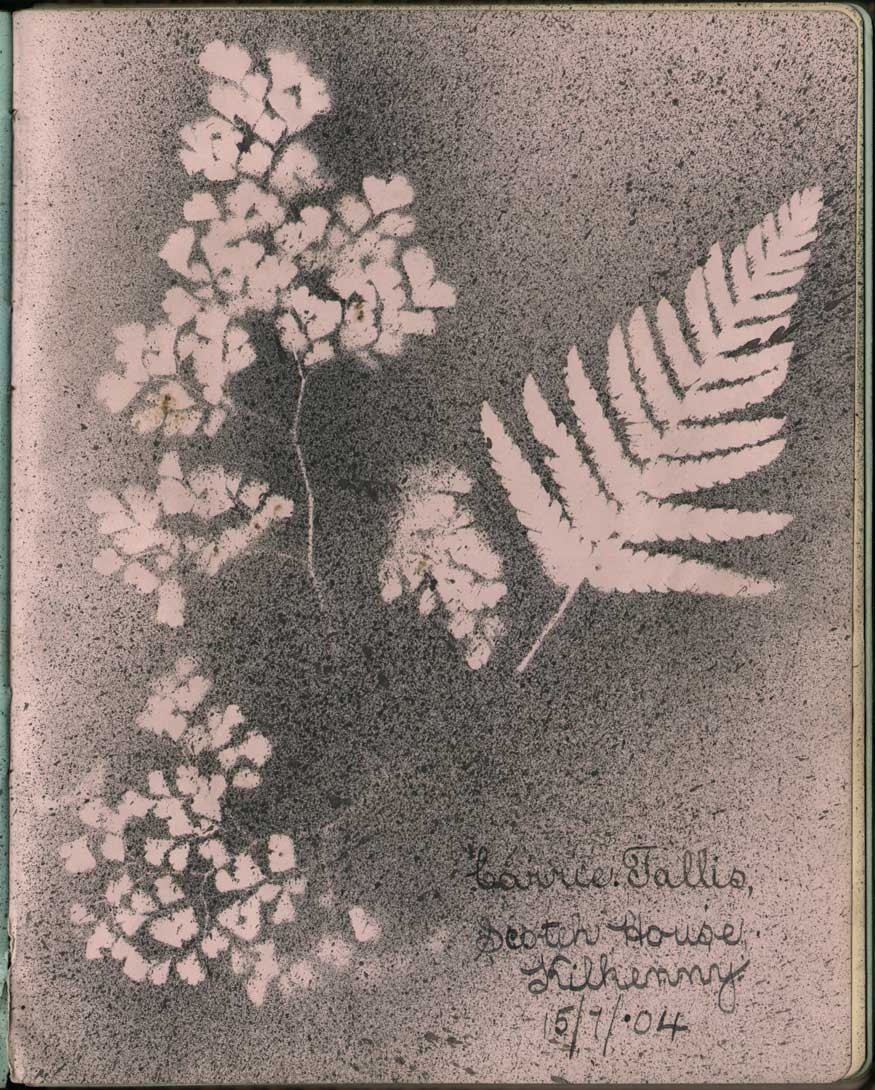
“Ink Splatter Photogram of Fern and Flowers on Paper”, 1904: by amateur Irish artist Caroline Emily Tallis, (1889-1972) (21.9 x 17.2 cm): single page from English or Irish compiled Edwardian album signed lower right: “Carrie Tallis, Scotch House Kilkenny 15/7/04”: from: PhotoSeed Archive
Our very own Pencils of Nature.
An impression of ourselves for sure, but also quickly obliterated-or not, like nature herself. Photography in this form has in a way been part of Earth’s plant and animal fossil record stretching back millions of years, with Mankind’s permanent efforts barely stretching back to the early 19th Century.

(6) individual Photograms, ca. 1925, by unknown American photographer on Kodak Self-Toning, single-weight glossy paper. (gelatin-silver developing out paper) each: 10.8 x 6.4 cm. Even before he discovered how to permanently “fix” what eventually became known as paper photographs in order to prevent their fading, Englishman William Henry Fox Talbot (1800-1877) first used his Photogenic Drawing method in 1834 to produce photograms. To do this he first placed a botanical specimen on a sheet of salt and silver nitrate-coated sheet of writing paper which produced a temporary, exact image of it when exposed to the Sun. Soon after, the lustrous blue Cyanotype process, perhaps best known today by the artistic plant studies perfected by Englishwoman Anna Atkins (1799-1871) made between 1843-53, gave way to even cheaper commercial methods for the photogram. Using store-bought, pre-sensitized photographic paper which home darkroom hobbyists readily exploited-similar to these examples- the art form was popularized even more in the early 20th Century. Specimens: top row, left to right: Shepherd’s Purse, Purple Violet, Yellow Violet; Bottom row, left to right: Bell Wort, Narcissus, Blue-Eyed Grass. all from: PhotoSeed Archive
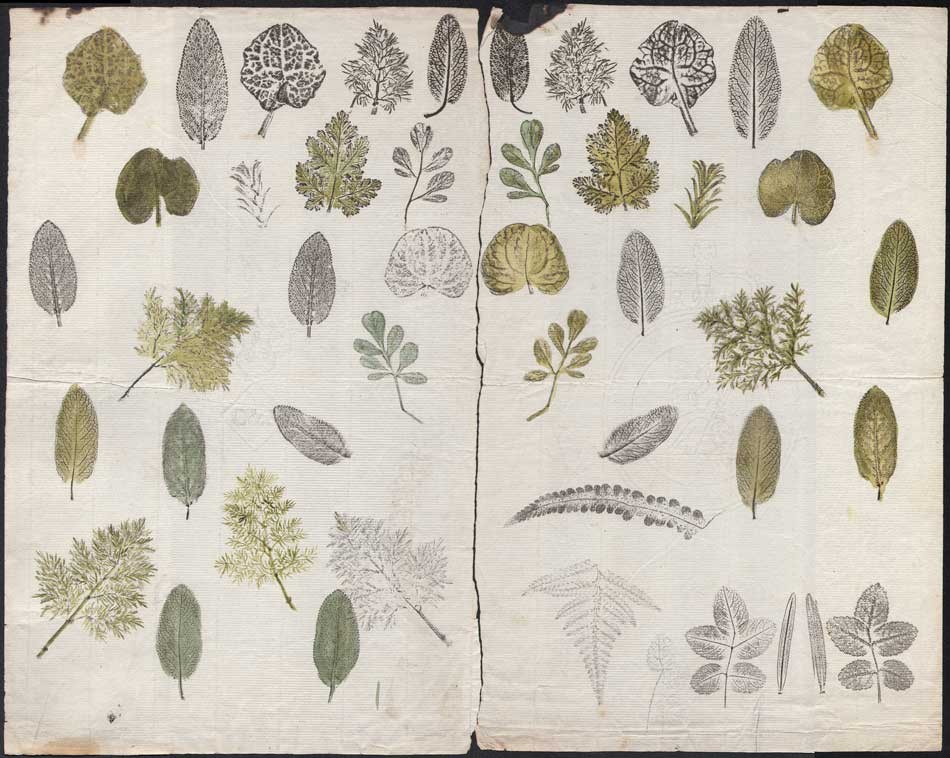
Nature prints: English: unknown maker: ca. 1775-1825: multiple, mirror impressions of unknown grass and leaf cluster specimens done with black printers ink & selective hand-coloring on laid paper leaf. (separated at middle) Britannia shield and C&S watermarks: 30.5 x 38.3 cm. Addressing an 1857 meeting of the Royal Society of the Arts, English Aesthetic Movement designer Christopher Dresser (1834-1904) gave the following historical account of the art of nature printing, of which this sheet is a rare surviving example, although ink rather than carbon black was used: “The earliest mode with which we are acquainted of producing impressions of plants was this:—The plant, after being dried, was held over the smoke of a candle or oil lamp, when it became blackened by a deposit of soot, after which it was placed between two sheets of paper and rubbed with a smoothing-bone, which caused the soot to leave the prominences of the leaf and adhere to the paper. In this way an impression of the plant was produced. This method of procuring impressions was employed as early as the year A.D. 1650.” from: PhotoSeed Archive
Enjoy this gallery of images celebrating the beauty of flora. From original Nature Prints ca. 1775-1825: inked leaves placed between a sheet of paper and pulled through a printing press; to mosaic red flowers adorning the head of a Roman goddess imagined by an artist around 250 A.D. transcribed and copied by the radical Talbotype process and published in 1850; to delicate British seaweeds copied into lead and printed 1859-60 to modern examples still nearly a century old: six silhouetted jewels ca. 1925 from the time photographic hobbyists gazed in wonderment at their first efforts emerging from developer trays in home darkrooms.



